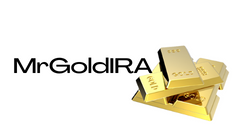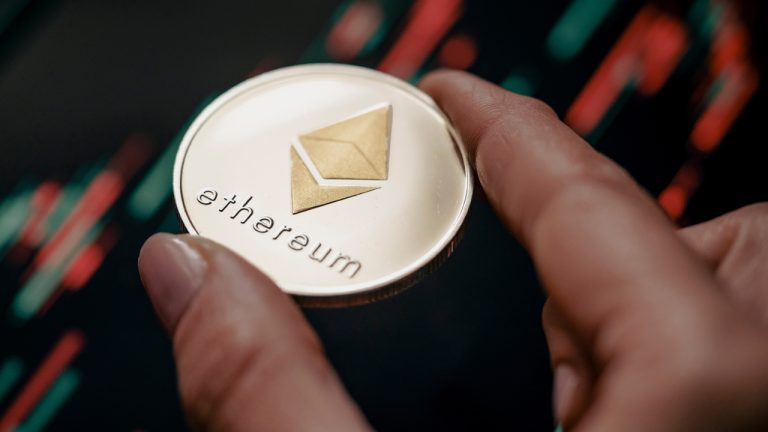
Ethereum's Price Movement
In the ever-volatile world of crypto assets, ethereum has exhibited a notable decline, with an 8.1% decrease in price over the past 24 hours. Technical indicators and chart patterns suggest a bearish sentiment in the air, urging traders to navigate with caution.
Ethereum’s (ETH) price hovers between $2,056 to $2,255 after a tumultuous 24-hour trading session ranging from $2,148 to $2,392 per unit. Ether’s market capitalization stands at $265 billion, with a significant trading volume of $30.91 billion, reflecting the high stakes and intense activity in the ETH market on Wednesday. These numbers set the stage for a deeper dive into the technical factors influencing ether’s price action.
Technical Indicators
Oscillators provide a glimpse into the momentum and potential reversals in price trends. The relative strength index (RSI) at 46.4 and Stochastic at 56.6 both indicate a neutral to bearish market sentiment. Meanwhile, the commodity channel index (CCI) and the average directional index further corroborate this neutrality. However, similar to BTC’s charts, both the momentum and moving average convergence/divergence (MACD) level lean towards negative sentiment, hinting at bearish undertones amidst the prevailing uncertainty.
Moving Averages
Moving averages (MAs) paint a picture of trending market behavior over various time frames. The shorter-term exponential (EMAs) and simple moving averages (SMAs 10, 20, and 30) predominantly suggest a negative undertone, echoing the immediate bearish sentiment in the market. In contrast, the longer-term averages (50, 100, and 200) tilt towards a positive outlook, indicating a possible bullish recovery in the long run. This dichotomy emphasizes the market’s volatility and the differing perspectives based on time horizon.
Short-term Analysis
On Wednesday, the 1-hour ETH/USD chart presented a marked downward trajectory, signifying a substantial sell-off. This trend suggests traders should wait for signs of market consolidation or bullish reversal patterns before engaging, to circumvent the intense downward momentum. For those exiting, it’s crucial to limit losses as the significant declines breach prior support levels, indicating a sharp downturn.
Echoing the short-term chart, the 4-hour ETH/USD graph shows a distinct bearish trend characterized by extended and notable falls. The focus here is on achieving market stability and spotting bullish reversals within a 12 to 24-hour period before making entry decisions. Exit strategies should leverage the conditions of being oversold following the swift downturn, with an attentive watch on support thresholds and market pullbacks.
Long-term Outlook
The daily ETH/USD chart offers a wider lens, illustrating alternating bullish and bearish days culminating in the considerable decline observed in the previous day. This pattern denotes heightened market volatility with a strong lean towards bearishness. Entry strategies should be judiciously made, looking for definitive bullish reversal indications over an extended period. Across all three time frames, the prevalent bearish sentiment underscores the importance of rigorous risk management and strategic foresight in these fluctuating market conditions.
Bull vs. Bear
Bull Verdict: Despite the prevailing bearish trends in the short term, Ethereum’s market performance shows resilience through the favorable longer-term moving averages and the neutral standings of key oscillators. If traders identify strong bullish reversal patterns and the market reacts positively to external stimuli or news, there could be a substantial recovery on the horizon.
Bear Verdict: Current technical indicators and chart patterns heavily lean towards a continued bearish outlook for ethereum. The dominance of negative signals in both short-term moving averages and oscillators, coupled with significant downward trends across various time frames, suggest the market may not have found its bottom yet.
What are your thoughts on ether’s market action on Wednesday morning? Share your opinions in the comments section below.
Frequently Asked Questions
What precious metal is best for investing?
Answering this question will depend on your willingness to take some risk and the return you seek. Although gold has traditionally been considered a safe investment choice, it may not be the most profitable. Gold may not be right for you if you want quick profits. If patience and time are your priorities, silver is the best investment.
Gold is the best investment if you aren't looking to get rich quick. If you are looking for a long-term investment that will provide steady returns, silver may be a better choice.
How do I Withdraw from an IRA with Precious Metals?
First, determine if you would like to withdraw money directly from an IRA. You should also ensure that you have enough money to cover any fees and penalties associated with withdrawing funds.
You should open a taxable brokerage account if you're willing to pay a penalty if you withdraw early. If you choose this option, you'll also need to consider taxes owed on the amount withdrawn.
Next, figure out how much money will be taken out of your IRA. This calculation depends on several factors, including the age when you withdraw the money, how long you've owned the account, and whether you intend to continue contributing to your retirement plan.
Once you know how much of your total savings to convert to cash, it's time to choose the type of IRA that you want. Traditional IRAs let you withdraw money tax-free after you turn 59 1/2, while Roth IRAs require you to pay income taxes upfront but allow you access the earnings later without paying any additional taxes.
Once the calculations have been completed, it's time to open a brokerage accounts. Many brokers offer signup bonuses or other promotions to encourage people to open accounts. However, a debit card is better than a card. This will save you unnecessary fees.
You will need a safe place to store your coins when you are ready to withdraw from your precious metal IRA. Some storage facilities can accept bullion bar, while others require you buy individual coins. Before you choose one, weigh the pros and cons.
For example, storing bullion bars requires less space because you aren't dealing with individual coins. However, each coin will need to be counted individually. However, you can easily track the value of individual coins by storing them in separate containers.
Some people prefer to keep their coins in a vault. Some people prefer to store their coins safely in a vault. Whichever method you choose, make sure you store your bullion safely so you can enjoy its benefits for years to come.
Who is the owner of the gold in a gold IRA
An individual who has gold is considered to be a “form of money” by the IRS and subject to taxation.
You must have at least $10,000 in gold and keep it for at most five years to qualify for this tax-free status.
Gold can be used to protect against inflation and price volatility. However, it is not a good idea to own gold if you don't intend to use it.
If you plan to sell the gold one day, you will need to report its worth. This will affect how much capital gains tax you owe on cash you have invested.
Consult a financial advisor or accountant to determine your options.
Can the government take your gold
Your gold is yours and the government cannot take it. You have earned it by working hard for it. It is yours. This rule could be broken by exceptions. For example, if you were convicted of a crime involving fraud against the federal government, you can lose your gold. Additionally, your precious metals may be forfeited if you owe the IRS taxes. You can keep your gold even if your taxes are not paid.
Should You Invest in gold for Retirement?
The answer will depend on how many dollars you have saved so far and whether you had gold as an investment option at the time. If you are unsure which option to choose, consider investing in both options.
Gold offers potential returns and is therefore a safe investment. It is a good choice for retirees.
Although most investments promise a fixed rate of return, gold is more volatile than others. Its value fluctuates over time.
However, this does not mean that gold should be avoided. It just means that you need to factor in fluctuations to your overall portfolio.
Another benefit of gold is that it's a tangible asset. Gold is much easier to store than bonds and stocks. It can also be transported.
As long as you keep your gold in a secure location, you can always access it. You don't have to pay storage fees for physical gold.
Investing in gold can help protect against inflation. It's a great way to hedge against rising prices, as gold prices tend to increase along with other commodities.
You'll also benefit from having a portion of your savings invested in something that isn't going down in value. Gold usually rises when the stock market falls.
Gold investment has another advantage: You can sell it anytime. Like stocks, you can sell your position anytime you need cash. You don't even have to wait until you retire.
If you do decide to invest in gold, make sure to diversify your holdings. Do not put all your eggs in one basket.
You shouldn't buy too little at once. Start with a few ounces. Add more as you're able.
Keep in mind that the goal is not to quickly become wealthy. It's not to get rich quickly, but to accumulate enough wealth to no longer need Social Security benefits.
While gold may not be the best investment, it can be a great addition to any retirement plan.
What are the benefits to having a gold IRA
You can save money on retirement by putting your money into an Individual Retirement Account. It will be tax-deferred up until the time you withdraw it. You can decide how much money you withdraw each year. There are many types and types of IRAs. Some are better for those who want to save money for college. Some are for investors who seek higher returns. Roth IRAs are a way for individuals to make contributions after the age of 59 1/2, and then pay taxes on any earnings upon retirement. However, once they begin withdrawing funds, these earnings are not taxed again. This type of account might be a good choice if your goal is to retire early.
Because you can invest money in many asset classes, a gold IRA works similarly to other IRAs. Unlike a regular IRA which requires taxes to be paid on gains as you wait to withdraw them, a IRA with gold allows you to invest in multiple asset classes. For people who would rather invest than spend their money, gold IRA accounts are a good option.
Another advantage to owning gold via an IRA is the ease of automatic withdraws. This eliminates the need to constantly make deposits. To avoid missing a payment, direct debits can be set up.
Finally, gold is one the most secure investment options available. Because it isn’t tied to any specific country, gold’s value tends to stay stable. Even in economic turmoil, gold prices tends to remain relatively stable. As a result, it's often considered a good choice when protecting your savings from inflation.
Statistics
- Indeed, several financial advisers interviewed for this article suggest you invest 5 to 15 percent of your portfolio in gold, just in case. (aarp.org)
- If you accidentally make an improper transaction, the IRS will disallow it and count it as a withdrawal, so you would owe income tax on the item's value and, if you are younger than 59 ½, an additional 10% early withdrawal penalty. (forbes.com)
- (Basically, if your GDP grows by 2%, you need miners to dig 2% more gold out of the ground every year to keep prices steady.) (smartasset.com)
- This is a 15% margin that has shown no stable direction of growth but fluctuates seemingly at random. (smartasset.com)
- If you take distributions before hitting 59.5, you'll owe a 10% penalty on the amount withdrawn. (lendedu.com)
External Links
law.cornell.edu
- 7 U.S. Code SS7 – Designation boards of trade as contract market authorities
- 26 U.S. Code SS 408 – Individual retirement accounts
cftc.gov
forbes.com
- Gold IRA: Add Some Sparkle To Your Retirement Nest Egg
- Understanding China's Evergrande Crisis – Forbes Advisor
bbb.org
How To
The History of Gold as an Asset
From the ancient days to the early 20th Century, gold was a common currency. It was universally accepted and loved for its beauty, durability, purity and divisibility. In addition, because of its value, it was traded internationally. There were different measures and weights for gold, as there was no standard to measure it. One pound sterling, for example, was equivalent in England to 24 carats, and one livre tournois, in France, to 25 carats. A mark, on the other hand, was equivalent in Germany to 28 carats.
In the 1860s, the United States began issuing American coins made up of 90% copper, 10% zinc, and 0.942 fine gold. The result was a decrease in foreign currency demand, which led to an increase in their price. The United States began minting large quantities gold coins at this time, which led to a drop in the price. The U.S. government needed to find a solution to their debt because there was too much money in circulation. To do this, they decided that some of their excess gold would be sold back to Europe.
Most European countries distrusted the U.S. Dollar and began to accept gold as payment. Many European countries started to accept paper money as a substitute for gold after World War I. The value of gold has significantly increased since then. Even though gold's price fluctuates, it is still one of the most secure investments you could make.
—————————————————————————————————————————————————————————————-
By: Jamie Redman
Title: Ethereum Price Analysis: Bearish Sentiment Prevails as ETH Declines 8.1%
Sourced From: news.bitcoin.com/ethereum-technical-analysis-eth-slides-over-8-amid-downward-market-pressure/
Published Date: Wed, 03 Jan 2024 15:30:18 +0000
Related posts:
 Ethereum Price Analysis: Bearish and Bullish Signals in the Market
Ethereum Price Analysis: Bearish and Bullish Signals in the Market
 Ethereum Technical Analysis: ETH Faces Downward Pressure; Bearish Trends Emerge Amidst Market Volatility
Ethereum Technical Analysis: ETH Faces Downward Pressure; Bearish Trends Emerge Amidst Market Volatility
 The Market Outlook for Ethereum: Analyzing the Recent Trends and Predicting Future Movements
The Market Outlook for Ethereum: Analyzing the Recent Trends and Predicting Future Movements
 Ethereum Technical Analysis: ETH Finds Stability in a Consolidation Phase
Ethereum Technical Analysis: ETH Finds Stability in a Consolidation Phase
















